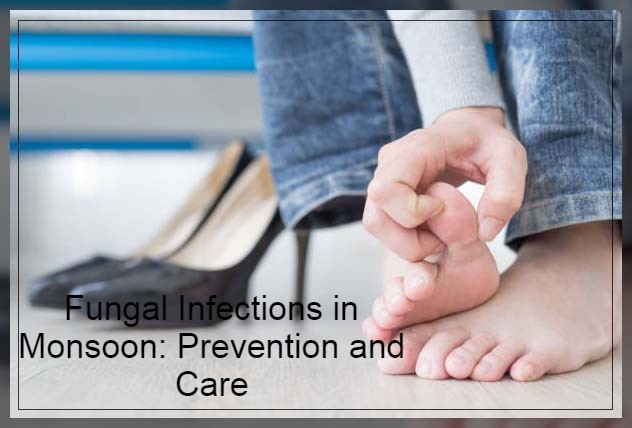Common types of fungal infections in monsoon
- Seborrheic Dermatitis: Protecting Your Skin During Monsoon Season
During the monsoon season, individuals with a history of seborrheic eczema or seborrheic dermatitis may experience a significant exacerbation of their symptoms. This can be attributed to various factors such as increased bacterial growth, high humidity levels, and the presence of moist skin. To minimize the risk of flare-ups, it is advisable for individuals with seborrheic dermatitis to take precautions and avoid getting wet in the rain.
- Foot Infections: Safeguarding Your Feet in the Monsoon Season
One common infection that frequently occurs during the monsoon season is athlete’s foot. This condition primarily affects the feet, particularly the areas between the toes. The dampness associated with the rainy weather creates an ideal breeding ground for fungal growth. To prevent athlete’s foot, it is crucial to maintain proper foot hygiene by keeping your feet clean and dry. Additionally, opting for well-ventilated footwear that allows your feet to breathe can help reduce the risk of fungal infections.
- Nail Infections: Maintaining Healthy Nails in the Monsoon Season
Toenail fungus infections are more prevalent during the monsoon season. The accumulation of dirt and debris in the nails during this time attracts germs that can lead to nail infections. Therefore, it is essential to prioritize nail hygiene and upkeep, especially if you have athlete’s foot. Regularly cleaning and trimming your nails can significantly reduce the chances of developing nail infections during this time of the year.
- Tinea Cruris and Corporis: Shielding Your Skin from Ringworm in the Monsoon Season
Ringworm, a common fungal infection that tends to thrive during the monsoon season, often targets areas such as the feet, neck, and underarms. Prolonged exposure to wet clothing can contribute to its development. To effectively prevent ringworm, it is recommended to wear loose and comfortable clothing that facilitates air circulation, reducing the chances of fungal growth.
- Tinea Capitis: Safeguarding Your Scalp and Hair from Fungal Infections
Tinea capitis is a fungal condition that specifically affects the scalp, beard, eyebrows, and eyelashes. This particular fungus takes root in the hair follicles, leading to an infection that can spread. Unlike other fungal infections, tinea capitis can be transmitted through the sharing of grooming or haircare supplies. Ensuring cleanliness and dryness of the affected area are crucial measures in combating this condition during the monsoon season.
Protecting Against Fungal Infections: The Importance of Personal Hygiene and Care
To prevent fungal infections, it is vital to prioritize personal hygiene, keep the body dry, wear breathable clothing, and practice proper foot care. These essential steps significantly reduce the risk of fungal infestations. In the event of an emergency, it is advisable to seek immediate medical attention from your nearest healthcare provider. Choosing a facility that offers full-time specialist services is recommended to ensure consistent and timely intervention for ongoing treatment and management.












